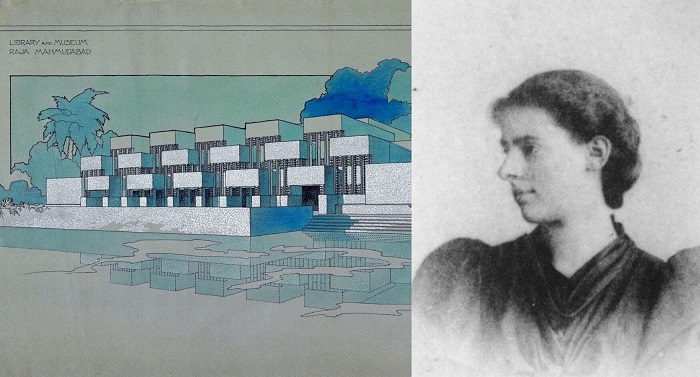ISABEL RUBIO ARROYO | Tungsteno
Marion Mahony Griffin was not only the second woman to graduate with a degree in architecture from the Massachusetts Institute of Technology (MIT) in 1894, she was also the first woman to obtain an architecture licence in the US state of Illinois. As some experts on her work point out, she made the drawings that people think of when they think of the famed architect Frank Lloyd Wright. And not only that. She was also known for her ability to combine modern geometry with organic forms inspired by nature.
The hand behind Frank Lloyd Wright's iconic drawings
Mahony worked as an architect in the United States, Australia and India. She was a great draughtsperson responsible for creating Wright's distinctive style of representation in the early years of his career. As Jennifer Gray, a scholar of the architect's work and former Curator of Drawings and Archives at Columbia University's Avery Architectural & Fine Arts Library, notes: "Unlike Wright, who never formally studied architecture, Mahony had trained in standard rendering formulas at MIT."
Her perspective drawings were not used to construct buildings, but to show people untrained in reading plans, elevations and sections what a building would look like. In other words, they were used as "a marketing tool that would be shown to clients, exhibited in museums, and published in journals."
This drawing by Mahony shows the K.C. DeRhodes House, located in South Bend, Indiana. Credit: Frank Lloyd Wright Foundation
A fusion of nature and architecture
An example of the originality of her drawings is the K.C. DeRhodes House, in which she integrates architecture with the natural world: "Much of the foliage is depicted as individual leaves and blades of grass, drawn as sharply as the building and in the same plane." In her drawings, lines vary in thicknesses to create depth and emphasis. Mahony also used various compositional techniques derived from Japanese prints: "the trees that break the picture plane, for example, as well as the use of negative space, unusual perspective, and abrupt changes in scale, such as the close-up bird and flowers in the foreground as they relate to the house behind."
Mahony played a key role in the design of Canberra, Australia. Credit: Frank Lloyd Wright Foundation
In 1911, Mahony married Walter Burley Griffin, a former employee of Wright’s, and began making renderings for his studio. Shortly afterwards they moved to Australia, where they received some important commissions, including Newman College at the University of Melbourne, Café Australia and Capitol House, an office building with theatre. They also designed a plan for the new capital city of Canberra. Together they completed 280 architectural, planning and landscape projects, of which about 180 were built, according to Anna Rubbo, Associate Professor of Architecture at the University of Sydney.
The architect who challenged gender roles
Although her style was "unconventional and immediately recognisable," Mahony decided to include her initials in her designs. "By identifying herself as the author, she challenged standard practices of a male-dominated profession in which only the signature of the principal architect is included on drawings," explains Gray. She understood "her presentation drawings to be art objects in their own right, not mere representations of Wright's architectural designs."
For Gray, "it is not an exaggeration to say that Mahony was in the vanguard of architecture and women's rights." Some scholars criticise that for years "architectural historians who acknowledge Mahony have tended to focus on her relationships with men and on her physical appearance, often in unflattering terms," according to The New York Times. But her legacy shows that the architect was first and foremost a woman ahead of her time, as the New South Wales Museums of History notes: "Over five decades she promoted progressive ideas that are as relevant today, 150 years after her birth, as in her own time."
· — —
Tungsteno is a journalism laboratory to scan the essence of innovation.
